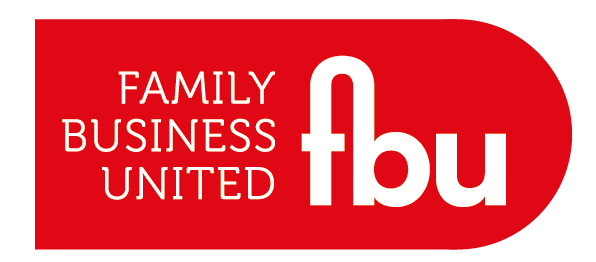Speaking Of Families & The Value Of Heritage
- Paul Andrews - Founder & CEO, Family Business United

- Jul 14, 2023
- 4 min read

Not all family businesses are alike, and there are multiple ways to highlight their strengths through the brand. Here are four ways to build a brand strategy around a family business.
There are recognised benefits to being a family business: a sense of personal connection, trust and responsibility. Many firms have discovered the value of the family at the heart of what they do, and use it successfully in their branding. Here are four common approaches for incorporating family ownership in a brand strategy. Could you shape your messaging along one of these lines, and tap into some of the advantages? Michael Gough shares his thoughts on how to build the family narrative into the brand.
Building Trust
Trust is the most significant association people have with family businesses. They’re built from the ground up, which takes personal investment, commitment and hard graft. They are run with care, pride, and a long-term mindset, so that they can be passed on to the next generation.
That’s a valuable story to be able to tell, especially in sectors where trust has been damaged in the past. Take C Hoare & Co, one of Britain’s oldest banks. It has been successfully passed on through 11 generations of a single family, which suggests good stewardship and wise investment.
You don’t have to have a history going back that far to be able to amplify the trustworthiness of your firm through its family ownership. Even as a brand new venture, you can highlight how you are putting your name to it and have a personal reputation to uphold. Anyone can talk about trust, but one advantage of a family business is that you can express exactly what makes you trustworthy, such as strong family bonds, pride or tradition.
The Value Of Heritage
Firms with a long family legacy are able to draw on tradition as part of their branding strategy, and it immediately sets them above the competition. It’s distinctive, unique, and speaks of continuity and craftsmanship.
Emphasising a family history can be particularly useful to brands that trade on a particular skill or craft that is passed on from one generation to another. William Grant & Sons describe themselves as ‘independent family distillers since 1887’. They are very deliberate in specifying that their Glenfiddich distillery is ‘family run’, not just ‘family owned’ – a nuance identified through careful market research in their export countries. This is something we always recommend as an agency: asking your customers what they think about a company can reveal all kinds of useful insights, both positive and negative.
Heritage is built over time, and is never part of a brand at the start. It’s possible for a company to have a heritage to draw on without realising it, as it is taken for granted. Or they might recognise it but not know how to make it part of their brand. Company anniversaries can be a good opportunity to assess the value of a family heritage and incorporate it into their messaging.
Ongoing Relevance
History and heritage matter more in some sectors than others. In some businesses it might even be a hindrance. It’s hard to imagine a tech company trading on being a family business – it might suggest inertia or a failure to move with the times. For those reasons, some will choose not to bring their ownership to the foreground.
This is not inevitable, and some brands have successfully used family business messaging to talk about innovation. The German stationer Staedtler is still run by the descendants of their founder, Johan Sebastien Staedtler, who started the company in 1835. For them, this legacy is one of constant advance and invention. They can innovate with confidence because they have done it so many times before, and have deep expertise in bringing new ideas to market. It’s a brand that looks to its past and finds a “pioneering spirit” that inspires the future.
Character And Values
A fourth approach is to talk about the values that the family hold and how they are expressed through the business. This can be especially powerful when talking about corporate social responsibility, charity initiatives or sustainability. Linking these activities to the family gives them authenticity.
The outdoor brand Patagonia was founded by Yvon Chouinard and his wife Malinda, and is jointly owned by the couple and their two children. Patagonia has world-leading sustainability goals, and it can ground these ambitions in Chouinard’s roots as a surfer, adventurer and nature enthusiast.
Family character doesn’t need to be radical. Warburton’s bakery uses its founding family very publicly to talk about an obsession with quality. Clarks shoes reference their founders’ Quaker values of modesty and integrity and prefer not to draw too much attention to any single individual.
Which Approach Works For You?
In summary, there is more than one way to create a brand strategy around a family business. You can use it to build trust or tap into your history. It can balance heritage and innovation, or express company values. It’s important to consider these approaches, and review your brand to see if it is performing the way you would like.
After all, one disadvantage of longstanding family businesses is that it’s possible to coast on a reputation, and not notice if it isn’t resonating with audiences the way it used to.
About the Author - Michael Gough is the Strategy Director and co-founder of the brand and design agency Sparks Studio. He helps established businesses with rich histories and complexity to re-establish their relevance, to connect with changing audiences and express what matters now. He also hosts the podcast Why It Matters, a series of conversations with leaders who are passionate about something that is at risk of being overlooked.








%20copy%20(4)%20copy%20(1)%20copy%20copy%20(1)%20copy%20(1)-Medium-Quality.jpg)



.png)
























